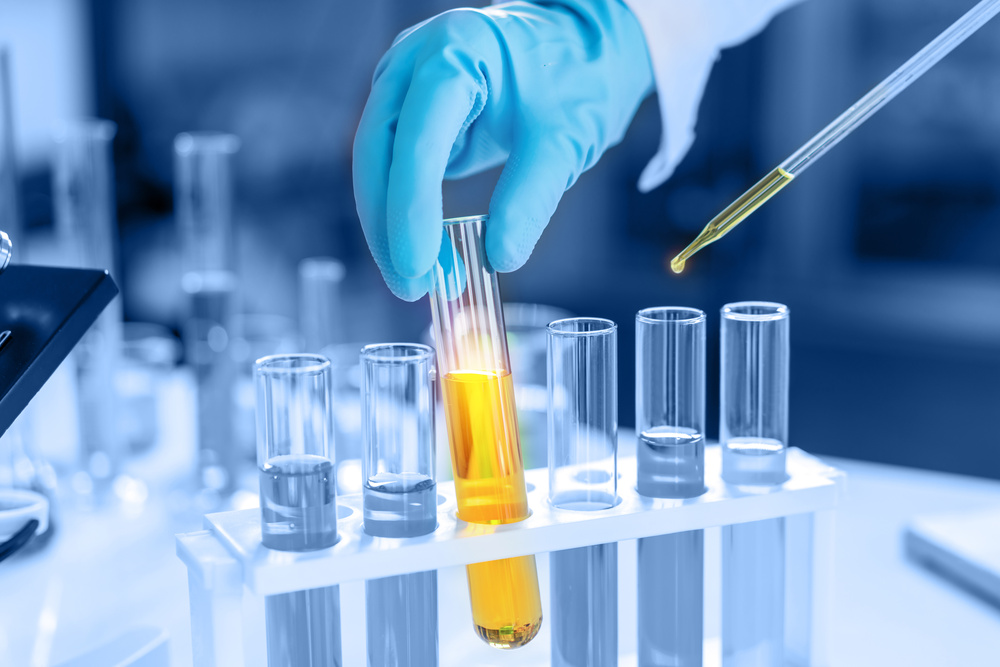
scientist with equipment and science experiments, laboratory glassware containing chemical liquid for research or analyzing a sample into test tube in laboratory.
Small details often matter most. A single impurity can ruin a batch of computer chips in chemistry. One wrong molecule can make a drug dangerous. That’s the reason purity is more critical than ever before in our technological world. Researchers and engineers need specialized tools to detect contamination in their ultra-pure chemicals. These materials are key in modern technology.
Purity by the Numbers
What does “pure” mean in chemistry? Table salt from grocery stores may be 99% pure. That sounds pretty good. However, in many contemporary applications, 99% is far from adequate. According to the experts at Trecora, high-purity specialty chemicals often reach 99.999% purity or higher. That’s like having just a single grain of sand blended into an entire pool of water. Some applications require even higher standards than that. The semiconductor sector occasionally requires chemicals that contain fewer than one impurity particle for every billion.
Reaching this degree of purity demands exceptional effort. Several filtration processes eliminate undesired particles. Distillation uses boiling points to separate substances. Special containers prevent contamination. Each surface contacting the chemical must be cleaner than a surgical tool.
The reward validates the exertion. These highly pure materials facilitate technologies that appeared to be mere science fiction only a few decades ago. They enable the small transistors found in computer processors. They form perfect crystals in LED lighting. They create the exact layers in sophisticated batteries.
Small Scale, Big Impact
Work in the lab with these substances occurs at microscopic levels. Researchers quantify amounts in milligrams or sometimes micrograms. They operate in clean environments where just one dust particle could spoil everything. However, these small experiments result in significant transformations. A recently found catalyst in a tiny lab could potentially aid in producing millions of tons of plastic with greater efficiency. A pure compound evaluated on a limited number of cells might turn into a therapy for countless patients. The transition from micro to macro begins with achieving the precise chemistry.
Research laboratories currently employ robots for the most intricate tasks. Machines can manipulate chemicals with greater accuracy than human hands ever could. They never tire. They never err because of a lack of concentration. This consistency is crucial when dealing with substances where each molecule is significant.
Industries Transformed
Various industries depend on pure chemicals in diverse manners. The pharmaceutical industry requires them to produce reliable, safe medications. Electronics producers use them to create quicker, more compact gadgets. The aerospace sector relies on them for substances that endure harsh environments.
Even conventional sectors have realized the importance of purity. Paint makers use pure pigments for vibrant colors. Food makers use real flavorings for consistent taste. Energy companies use clean catalysts for efficient fuel refining. Every improvement in chemical purity creates new opportunities. Materials that were unavailable five years ago are now standard. Processes that appeared too costly turn out to be manageable. The unattainable turns unavoidable.
The Road Ahead
The need for cleaner chemicals continues to increase. Quantum computers require materials with such high purity that existing technology struggles to create them. Future medicines need substances that are devoid of impurities that are still undetectable. Energy systems of the future will rely on chemicals that are sufficiently pure to facilitate reactions we are only starting to comprehend.
Conclusion
From the smallest experiment to the largest factory, basic chemistry drives progress. Our surroundings are shaped by these invisible components. With technological progress and the rise of new challenges, the pursuit of increasingly pure chemicals persists. Future advancements rely on the current quest for excellence at the molecular scale. The future, as it turns out, is constructed one pristine molecule at a time.





